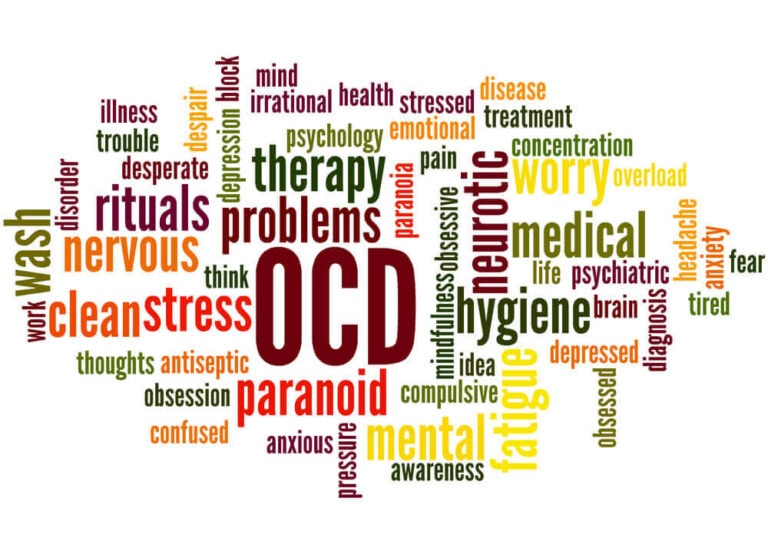PTSD is a mental health disorder that involves severe anxiety, flashbacks, fear, and negative thoughts after experiencing or witnessing a traumatic, life-threatening event. The individual can directly experience this traumatic, life-threatening event, or they can be a witness to such an event. Individuals with PTSD/PTSI will have reminders of the event, will feel stressed, and will develop sleep problems. Examples of traumatic events include military combat, a natural disaster, a sexual assault, physical violence, traumatic accidents, witnessing the loss of a loved one, incarceration, or individuals in refugee or concentration camps.
Although the DSM-V recognizes PTSD as a mental health “disorder,” the problem with the language in everyday society is that many individuals do not want to be labeled as having a “disorder,”, especially after experiencing a life-altering trauma event. Individuals are not born with PTSD; it “happens to them.” In other words, they are victims of their trauma. Additionally, PTSD is not a permanent condition. It can be treated, and as a result, many individuals may argue that labeling this term as an “injury” rather than a “disorder” may reduce the stigma and encourage more individuals to seek treatment. When an individual has an “injury,” they may be more likely to seek treatment for an injury rather than if they have a “disorder,” as the term disorder may lead many to believe that it is permanent, regardless of treatment.
Defining PTSI
PTSI, posttraumatic stress injury, although not recognized by the DSM-V, is becoming a popular term among mental health professionals, mental health advocates, and the general population as a replacement for PTSD.
A quick internet search differentiating these terms can seem confusing as many sites try to define the “difference”; however, PTSI and PTSD are synonymous terms that can be used interchangeably, meaning there is no difference between the nitty-gritty details. Instead, the difference lies in the belief that injury is reversible, can be treated, and is less stigmatizing than a disorder.
Who is Affected?
Approximately 50% of women in the United States and 60% of men experienced a traumatic event at one point in their lives. About 7-8% of the U.S. population will develop PTSD/PTSI in their lifetime, and 8 million individuals in the U.S. will develop this injury in a given year. PTSI/PTSD is more common in women, and many believe this is because females are more likely to experience traumatic events than women.
PTSD can also develop in teens and children following a trauma, just as it would in adults. For example, more than one-fifth of children that are raised in foster care are also diagnosed with PTSD, mostly triggered by physical or sexual abuse.
PTSI in the military is on the rise due to better detection and increased awareness. However, the military is not the only profession that has seen a rise in the condition, as there is also a rise in first responders.
Signs and Symptoms of PTSD/PTSI
Posttraumatic stress disorder/injury is diagnosed when severe stress symptoms exist for at least one month following exposure to a life-threatening traumatic event. These signs and symptoms must cause impairment in daily functioning and are not attributable to substance abuse or exposure to media such as television and movies. Individuals must experience symptoms in each of the following categories:
- – Persistent re-experiencing of the traumatic event via dreams, perceptions, images, hallucinations, or flashbacks.
- – Avoid triggers such as people, places, thoughts, and feelings associated with the traumatic event.
- – Feelings of detachment, negative self-esteem, negative emotional states, and the inability to remember associated events. The individual will often feel numb.
- – Marked changes in arousal and activity include irritable behavior, hypervigilance, increased arousal, reckless behavior, sleep disturbance, and concentration problems.
Acute stress disorder
Acute stress disorder is similar to PTSD/PTSI, except for the duration of signs and symptoms. The signs and symptoms of acute stress disorder last one month. If symptoms continue longer than one month, then you or your loved one has most likely developed PTSD/PTSI.
How to help your loved one with PTSD/PTSI
You can take steps to help a loved one cope with stress brought on by a traumatic event, whether it’s the result of an accident, violence of any kind, such as an assault; verbal, physical, domestic, or sexual abuse; or military combat, or another type of trauma. Often we may want to help and support our loved ones, but we may not know what to say or how to act. We may have good intentions but fear saying the wrong thing to potentially cause more hurt. One of the best ways to help your loved one with PTSD/PTSI is by being a supportive listener without trying to “fix” anything. Before offering help to your loved one. It is important to remember that surviving traumatic stress is a continual process. Some days are better than others, and there is no specific time for recovery. Some individuals may improve in six months, whereas others may live with their signs and symptoms for years. You may continue to have many conversations with your loved one over weeks or months as he or she processes the traumatic experience during or after a period of professional care from a therapist or physician.
Be ready and willing to listen, but don’t push: Tell your loved one that you want to listen. Offer your listening ear without judgment but be understanding if they do not feel like talking. Allow them to share their feelings, thoughts, and experiences at their own pace. Listening also means that you do not make assumptions about how they are feeling or what they are experiencing, and it also entails allowing them to be upset with what has happened in their life.
Choose an appropriate time to talk but do not pressure them: If your loved one comes to you asking to talk, make sure you have the time and are in the right headspace. Suppose you feel stressed or rushed, set up another time to be there for them or do something that helps you clear your mind.
Educate yourself about PTSD/PTSI: Posttraumatic stress disorder/injury goes beyond what the media portrays it to be. If you want to understand what your loved one is experiencing, research and read from reputable sources such as the National Institute of Mental Health (NIMH): PTSD, American Psychiatric Association (APA), Mayo Clinic, U.S. Department of Veterans Affairs National Center for PTSD, PTSD Foundation of America
Manage your own stress and adopt ways to take care of yourself: Watching a loved one experience signs and symptoms of PTSD/PTSI can be stressful and can take a toll on your own mind, body, and personal life. To be a good friend and support system for your loved one, you must practice self-care and self-awareness to ensure that you are in a good place, both mentally and physically.
Offer to go to therapy appointments or doctor visits: Going to doctors and therapy appointments alone can be stressful, especially if your loved one is not used to seeing a therapist or a physician regularly. You can offer to attend these appointments with your loved one, even if it means sitting in the waiting room. Your presence matters, and being there for your loved ones shows you care about them.
Learn their triggers: Each individual will have a different experience of PTSD/PTSI, so it might help to talk about what sorts of situations or conversations might trigger flashbacks or difficult feelings. For example, they might be particularly distressed by loud noises, arguments, or particular places. Understanding their triggers could help you to avoid these situations and feel more prepared when flashbacks happen.
Plan ahead for difficult times: If your loved one is having a good day, discussing how you can help if a crisis occurs may be wise. For example, you could encourage them to map out a crisis plan, discuss red-flag symptoms and learn their triggers so that you can understand how to cope with them.
Do “normal” activities with your loved one: PTSD/PTSI is stressful but not every day or every time you hang out with them, should you focus on their past trauma.
Spend quality time with them and do everyday things such as going to lunch, watching a movie, hiking or bike riding, or cooking dinner. Of course, their trauma is important, but the goal is to help them cope with their trauma, and engaging in healthy, normal daily activities can do this.
“When we feel weak, we drop our heads on the shoulders of others. Don’t get mad when someone does that. Be honored. For that person trusted you enough to, even if subtly, ask you for help.”
― Lori Goodwin




